
Hampshire and Isle of Wight
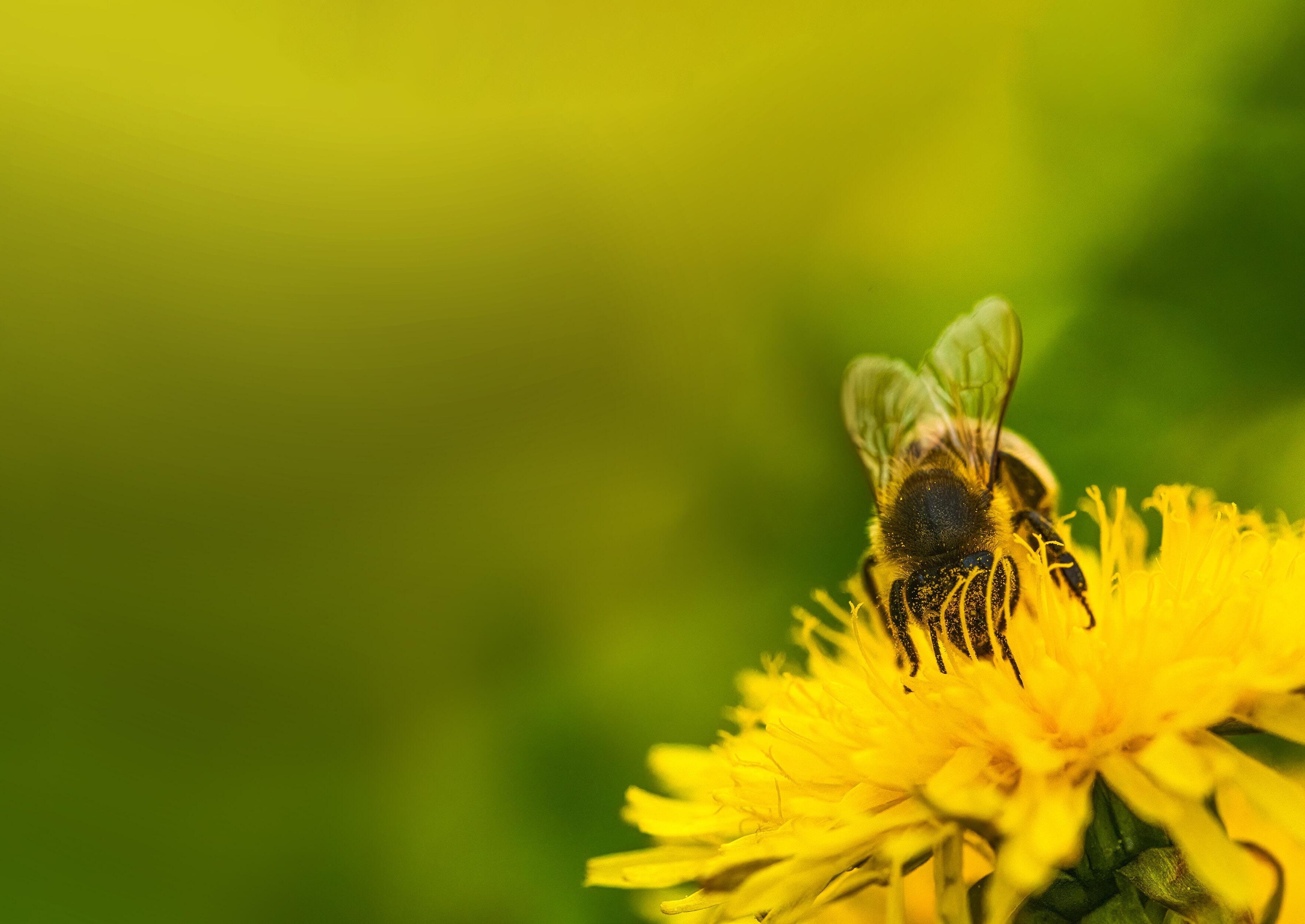



Hampshire and Isle of Wight


The past year marked a significant chapter in bringing our ambitious Wilder 2030 strategy to life. We continued to give nature the space and time it needs to recover. By expanding vital wildlife corridors, restoring precious habitats, forging strong partnerships, and safeguarding rare species, we helped to create a healthier, more resilient Hampshire, Isle of Wight and local seas.
With only four years remaining to reach our Wilder 2030 goals, our focus has shifted to the final phase of our strategy. But the work does not stop at 2030. We’re now actively looking at what comes next — to ensure the strongest path towards the wilder future we all desperately want and need.
Climate change and extreme weather events continue to test our work, with spring and summer droughts followed by autumn and winter floods impacting wildlife across our reserves. The political climate in the past 12 months has posed many challenges too, with nature far too frequently misrepresented as a barrier to growth. But these pressures only sharpen our resolve, driving us to work harder, innovate more, and build greater partnerships – strengthening the case for nature as the foundation of a resilient future.
A highlight this year was the expansion of Lymington Reedbeds Nature Reserve. This vital corridor, part of our Forest to Foreshore vision, allows wildlife to move freely across the landscape. Thanks to generous donations and legacies, we also secured
two important sites in the Eastern Yar Valley on the Isle of Wight, Colman’s Withybed and Morton Marsh, and doubled the size of Coulters Dean in the South Downs. This expansion of Coulters Dean protects rare chalk grassland, rich with orchids, butterflies, and other insects. All four sites add to the network of vital habitats we are defending and preserving.
Collaboration has been key to our successes this year. Working with businesses, landowners, councils, government agencies, and other charities, we’ve restored habitats in the New Forest, on MOD sites, floodplains, and coastal areas along the Solent –protecting wildlife and helping to build communities.
Together with Marwell Zoo and the Bristol Zoological Society, we saw the opening of a new Native Species Zone, a breeding centre that will play a vital role in supporting endangered white-clawed crayfish populations as part of the Trust’s longrunning Southern Chalk Streams project.
Our marine conservation work also continues to grow. Through the Solent Seagrass Restoration Project, seagrass has returned to the River Hamble for the first time in nearly a century, and renewed support from our partner Boskalis Westminster and hundreds of marine volunteers and supporters will help scale our restoration efforts as we move toward 2030.
Inspiring and engaging communities remains central to our mission. With new investment in neighbourhoods, schools, and urban spaces, we’re supporting collaboration across diverse groups. We’ve also welcomed
seven new Community Super Champions to Team Wilder to help spread the word for nature.
By expanding land, deepening community ties, and building cross-sector partnerships, we are proud of the positive strides made during the year. However, we know the work is far from done, and the urgency with which we must act to defend our natural world is more pressing than ever.
Support is crucial to the ongoing fight. Huge thanks to our members, volunteers, donors, campaigners, and anyone advocating and raising awareness for the Trust and our work. Your support truly makes a difference and, together, we can achieve a wilder future.
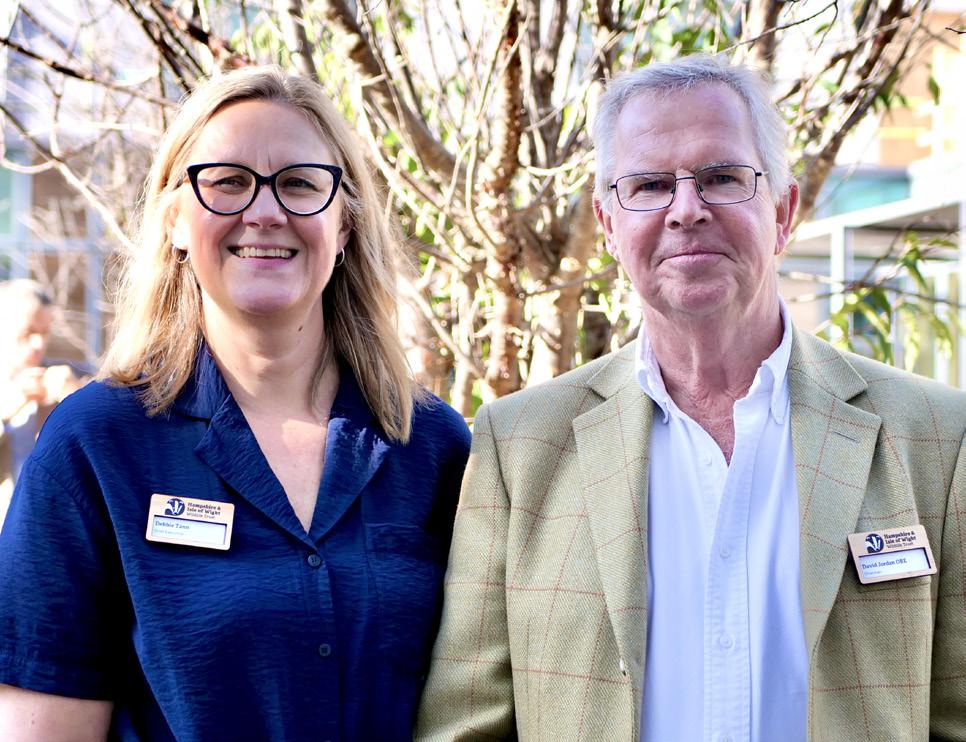

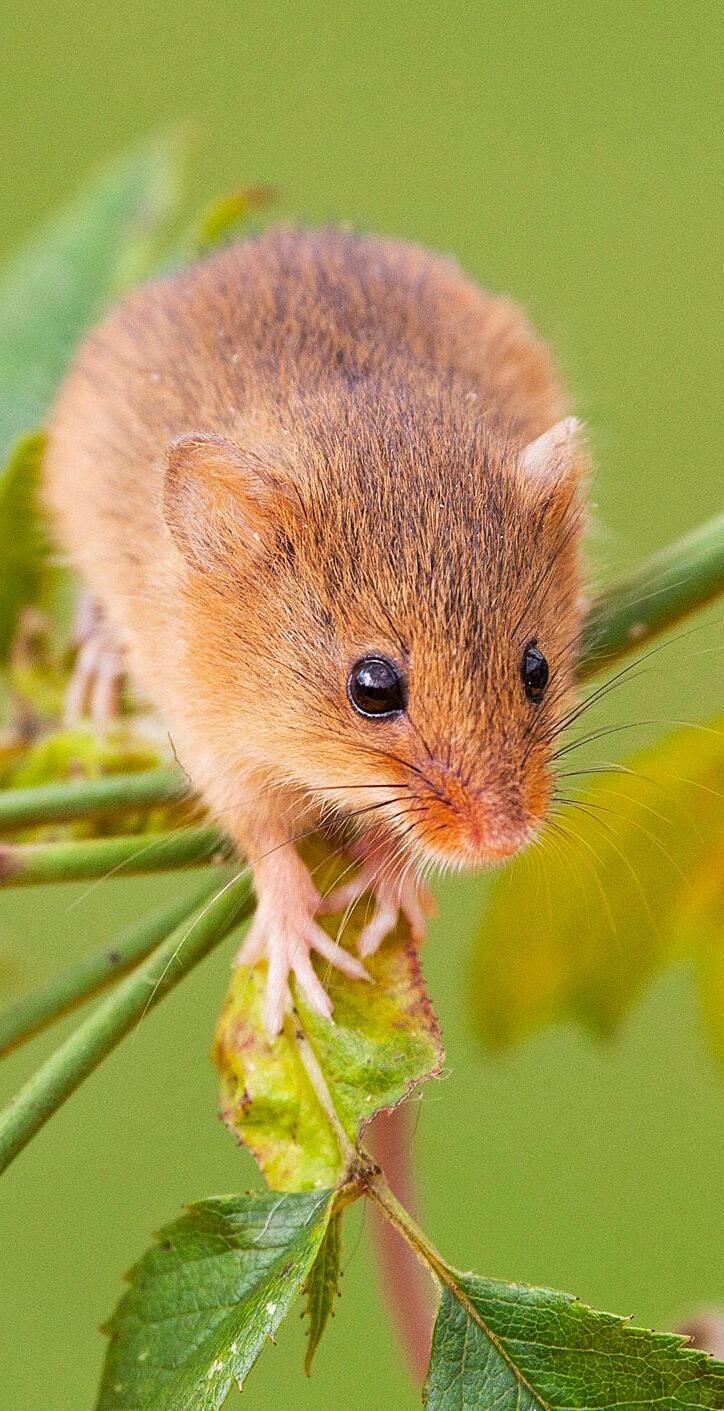

For 64 years, the Trust has safeguarded the wildlife and wild places of Hampshire, the Isle of Wight, and our local seas. However, with the climate and biodiversity crises posing an ever-growing threat to our natural world, the urgency to halt the decline in species abundance and protect 30% of our land and sea for nature’s recovery has never been greater.
As well protecting the vital wildliferich habitats which remain, the Trust also continues to take strides to restore ecosystems at scale as well as encouraging more people to take meaningful action to create the societal change needed to tip the balance in nature’s favour.
Since the publication of our strategy in 2019, we have made exciting progress. We have acquired over 340 hectares (840 acres) of new land for nature since 2020; launched innovative programmes like the Nitrate Mitigation Programme, which has unlocked new sources of funding to enable rewilding at scale; and led the way in seascape-scale marine restoration partnerships, such as the Solent Seagrass Restoration Project and Solent Seascape Partnership. By engaging with communities through a wide range of educational and conservation initiatives, the Trust has also fostered a collective commitment to restore nature.
While there is much to celebrate, there is still a long way to go. Given the ever-changing demands of nature recovery and the
challenging external political landscape which is emerging under the new UK Government, the need for urgent action remains prevalent and of the utmost importance.
A wilder future is still within our reach, but we must act now.
Our Vision is for a Wilder Hampshire and Isle of Wight by 2030 – where nature is recovering, wildlife is returning, damaged ecosystems are being restored, and everyone benefits from a healthier, more resilient natural environment.
Our Mission is to get more people on nature’s side and create more space for wildlife to thrive.
In early 2022, The Wildlife Trusts launched a UK-wide 2030 strategy with national goals for local action, collective impact, and contributing to global change. We refreshed our strategic goals to align fully with those national targets. And in 2025-26, we will be carrying out mid-term reviews of the strategy with a view to further updating our approaches and targets for the crucial second half of Wilder 2030. We aim to realise our vision and achieve our mission by delivering three interconnected strategic goals:
Nature in Recovery
30% of land and sea is protected and managed positively for wildlife by 2030. Trends for key indicator species are improving by 2030.
People Taking Action
1 in 4 people are inspired and empowered to act in support of nature’s recovery by 2030. Support for the Trust grows year on year.
Nature as a Solution
Restoring nature helps tackle issues like climate change, pollution and flooding. Investment in nature-based solutions creates increased opportunities for nature’s recovery on land and at sea.
Our strategy is complemented by a three-year business plan with targets and key performance indicators (KPIs). This enables us to monitor progress and measure against strategic objectives.
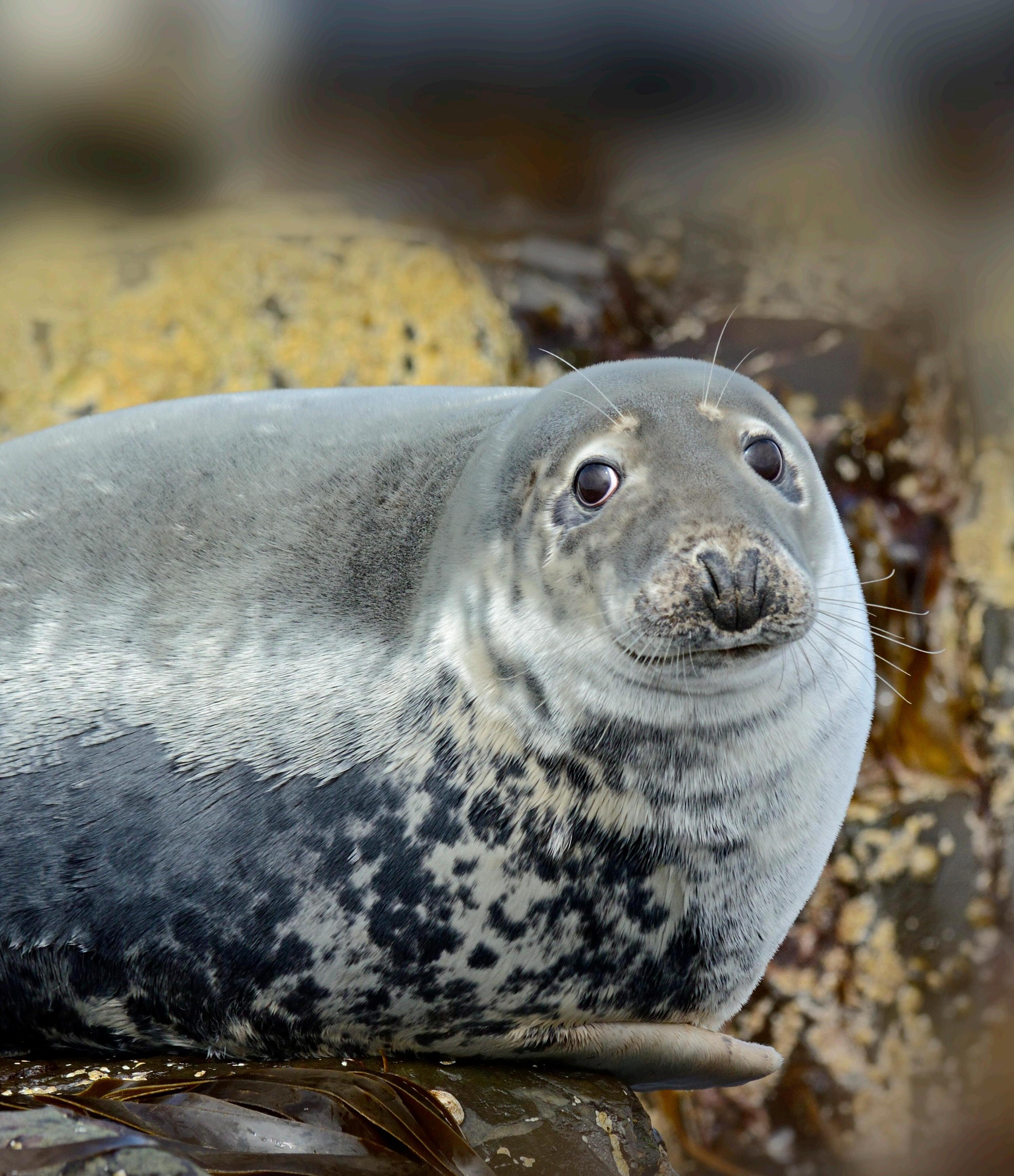

4,917
hectares (12,150 acres) in Hampshire and the Isle of Wight managed by the Trust (2023/24: 4,896 hectares / 12,098 acres)
6
sites acquired to support nature recovery –Colman’s Withybed, Portchester – Solent Wader and Brent Goose Sanctuary Site and the extensions of Coulters Dean, Deacon Hill, Lymington Reedbeds and Morton Marsh (2023/24: two sites)
96%
107
46,578 of Trust SSSIs (Site of Special Scientific Interest) in favourable or recovering condition (2023/24: 96%)
Full Time Equivalent (FTE) contracted employees (2023/24: 103)
29,103
members and friends (2023/24: 28,689)
518
livestock animals, enabling conservation grazing on the land we manage — 267 cattle, 242 sheep and 12 native ponies (2023/24: 246 cattle, 270 sheep and six native ponies)
social media followers across Facebook, Instagram, X and LinkedIn (2023/24: 44,632)
1,407
volunteers (2023/24 1,466)


Despite severe flooding caused by seawall infastructure failure, Farlington Marshes is showing signs of resilience. Emergency repairs by the Environment Agency stabilised water levels and, amid adversity, wildlife returned. Our innovative reedbed nesting structures were quickly used by bearded reedlings, allowing broods to fledge despite the flooding. The breeding season was one of the best on record: 53 lapwing, 10 avocet, seven redshank and 31 black-headed gull chicks were ringed and recorded.
At Swanwick Lakes, improved access to the centre lake and pond facilities has enabled more schools and community groups to connect with nature. A striking display of scarlet elf cup fungi lit up the winter months, while spring saw 292 frogs and toads rescued from a fence line blocking their migration route.
The Lower Test Valley is reaping the benefits of newly restored habitats. In a project initiated and funded by the Environment Agency and the Trust, 90 hectares (222 acres) of floodplain habitat have been restored at Manor House Farm in the Lower Test Valley, providing vital support for wildlife and
the community. This site is transforming into a critical refuge for wading birds and overwintering wildfowl, while increasing the site’s resilience to the impacts of sealevel rise.
At Blashford Lakes Nature Reserve, a newly installed fivemetre nesting tower now offers secure homes for red-listed swifts and house martins. The tower, the first of its kind on Trust land, features 23 swift boxes and 12 house martin cups, with ventilation, solar panels, and speakers playing bird calls to attract young birds. Special thanks to Hampshire Ornithological Society, Hampshire Swifts, and Peak Boxes for their generous funding, support and expertise.
Several coastal initiatives have launched in the Hurst Spit and Keyhaven area. A new forum of 21 organisations began working together to protect and enhance populations of breeding and wintering waders. A dedicated team of coastal volunteers is also engaging with visitors, raising awareness
about these sites for internationally important species such as brent geese and shorebirds.
At Roydon Woods, we have worked with the Freshwater Habitats Trust, Newt Conservation Partnership and Species Survival Fund to bring to life three new ponds that will be fed by surface water and rainwater. These ponds will increase habitats for species such as great crested newts, frogs and dragonflies. They have also created shallow feeding grounds for species like snipe and woodcock (which have already been spotted in action).
We were successful in securing a £250,000 Defra grant to deliver habitat improvements across 62 hectares (153 acres) of MOD heathland. At Pamber Forest, four new bat species were recorded, nightjars bred, and rare holly parachute fungus was discovered. At Foxlease, the window-winged caddisfly, Hagenella, was found in several locations, prompting setup of a monitoring transect with support from Surrey Wildlife Trust. Bartley Heath recorded its first southern migrant hawker dragonfly – a recent UK arrival and a striking indicator of our changing climate.
We have also seen an increase in adder activity and populations across our northern estate.
Amid growing concern for Atlantic salmon, spawning was recorded at both Hockley Meadows and Winnall Moors following targeted habitat improvements, including
enhanced gravel beds and flow conditions. These successes align closely with the goals of the Itchen Salmon Delivery Plan, launched in April 2025, which brings together conservation groups, fisheries experts, and environmental organisations, including the Trust. Together, we’re working to protect the species at every stage of its lifecycle, from river to sea and back again.
Winnall Moors also saw a welcome expansion of white-clawed crayfish – two years after their rediscovery following a 30-year absence. At St Clair’s Meadow, we launched a new water vole monitoring programme, using rafts and trail cameras to track activity across the river corridor. At Chappetts Copse, volunteers’ work to open glades is encouraging the return of the rare sword-leaved helleborine.
Deacon Hill grew by 22 acres, securing key habitat for Duke of Burgundy butterfly. At Noar Hill, nearly 26,000 orchids of several species were counted!
Butterfly highlights
The number of butterflies recorded across 39 Trust reserves in 2024 was
38,279
This compares with 26,270 records in 2022 across 35 of our sites.
4,786 butterflies recorded at Arreton Down (Isle of Wight).
3,815 butterflies recorded at Deacon Hill.
3,615 butterflies recorded at Broughton Down.
Meadow Brown made up 15,764 of the 2024 records.
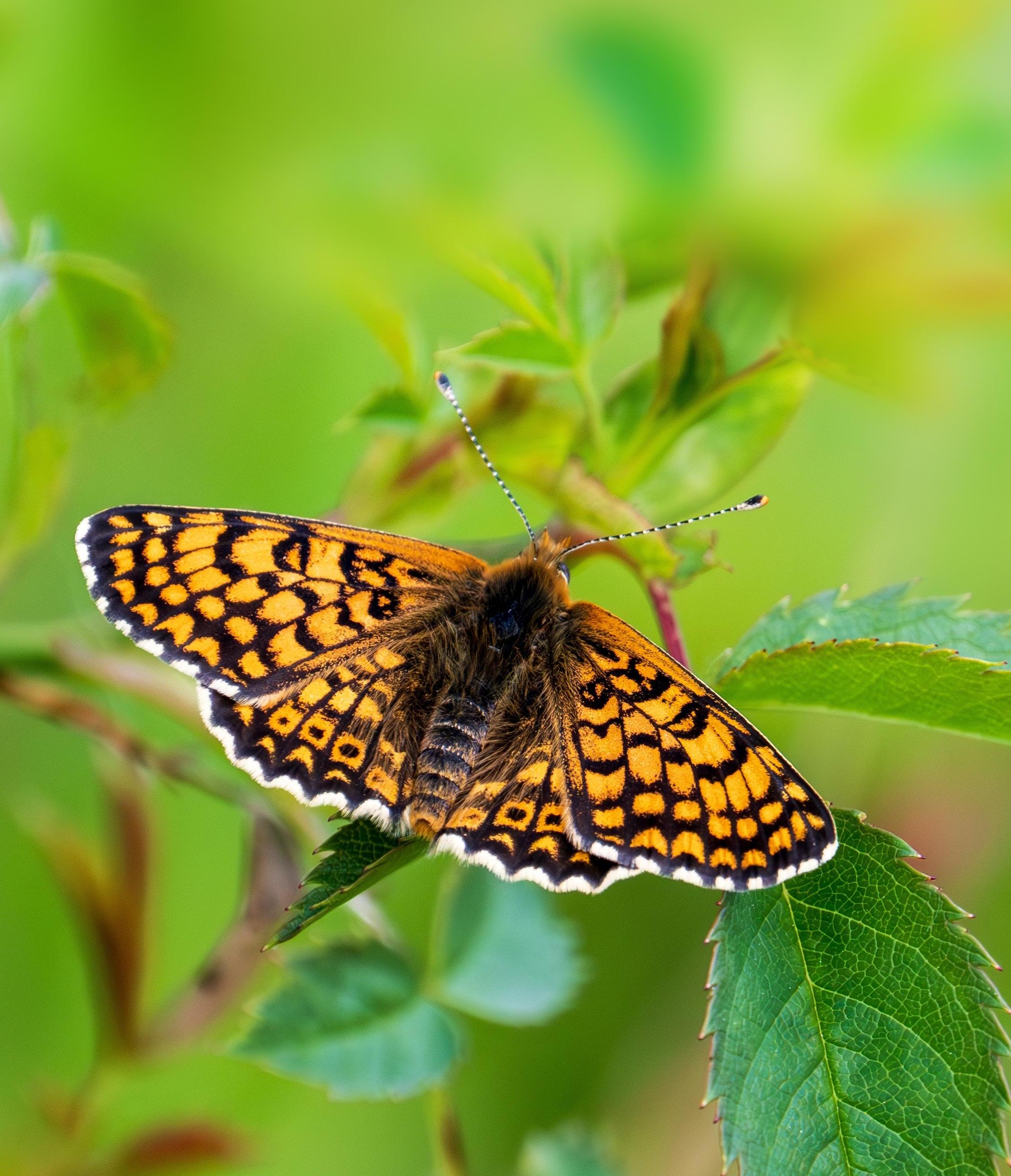

At Wilder Little Duxmore, our six Exmoor ponies continue to shape the landscape through conservation grazing. Their activity helps maintain a mosaic of open habitats, breaking up dense vegetation and promoting biodiversity. In addition, this year we welcomed two different grazers: Moo, a water buffalo, and Alice, a more conventional beef cow. Their mixed grazing promotes greater plant diversity and improves soil health, building more resilient habitats that can better withstand drought and heavy rainfall.
At Wilder Nunwell, reduced nutrient levels are already allowing natural processes to re-establish themselves, with wildflowers and wetland species beginning to reappear. Much more is planned for this site, including a natural flood management scheme and planting of historic hedgerows to improve habitat connectivity.
Both of our Wilder sites continue to demonstrate how nature can recover when given space and opportunity. Our partnership with local regenerative farm, Nunwell Home Farm, supports effective conservation grazing while benefiting their sustainable business. Further, our continued monitoring, delivered through our ecology team, Arcadian, has shown startling results (see panel, right) as wildlife continues to increase.
A key piece of work this year has been the delivery of the Eastern Yar Floodplain Restoration Project. Though still ongoing, habitat restoration and improved water flow are already reducing flood risk and benefiting
wildlife. The newly restored wetlands are attracting species such as wigeon, great white egret, and marsh harrier.
The Trust expanded its estate within the Eastern Yar with two land purchases: Colman’s Withybed and an extension to Morton Marsh, bringing the total landholding within the Eastern Yar Network to 130 hectares (321 acres).
The aspiration for the release of wild beavers on the Island continues. Five years since the plan’s conception, we now have confirmation from Defra and government on the Wild Release Licencing process. An Expression of Interest was submitted in May 2025, and we are pleased to report that Natural England has invited us to submit a full licence application for a wild release of beavers on the Eastern Yar. Our Beaver Recovery Project Officer is working on the licence application, engagement programme and data gathering to provide the comprehensive supporting information required for the licence application.
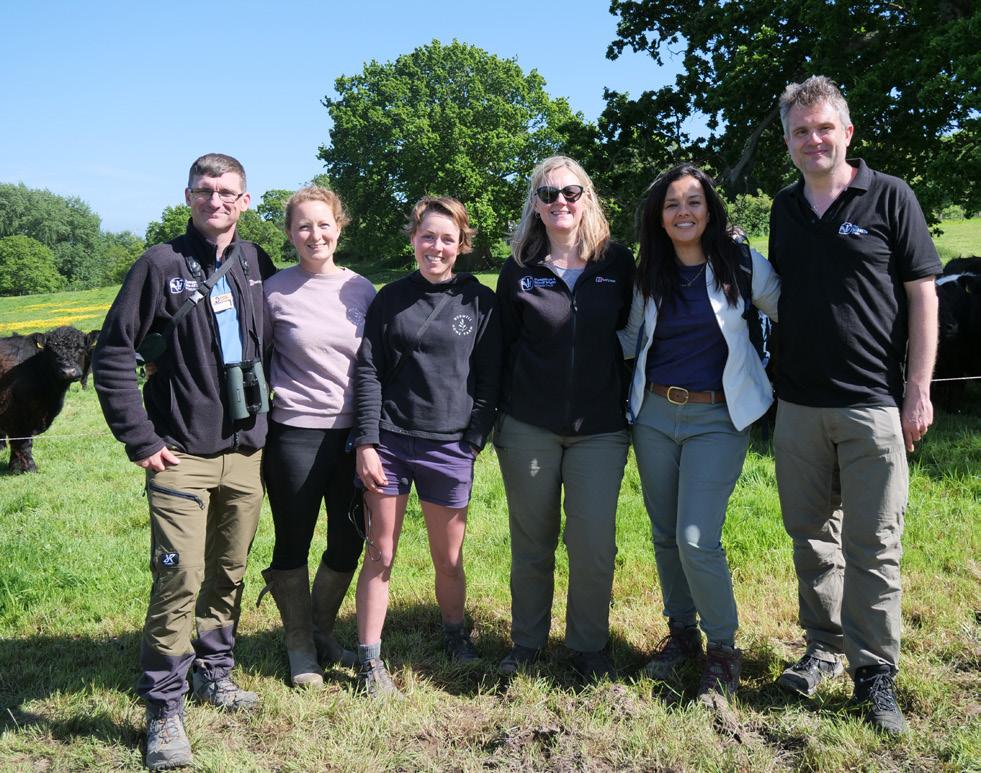
In May 2024, the Trust hosted the Seeing is Believing Conference, bringing together Wildlife Trust leaders from across the UK, alongside conservationists Liz Bonnin (President of the Royal Society of Wildlife Trusts), Megan McCubbin (Trust President) and Chris Packham (Vice President).
The event showcased innovative conservation across the Isle of Wight and Hampshire, highlighting the vital link between land and sea.
A visit to the Eastern Yar explored the role of healthy soils, river ecosystems, and wild beavers in restoring landscapes, mitigating floods, and boosting biodiversity. We also spotlighted the synergy between rewilding and regenerative farming at Wilder Little Duxmore and Wilder Nunwell. Nunwell Home Farm shared how their practices align with rewilding, addressing climate and biodiversity challenges while sustaining a business.
Pioneers like the Garlic Farm and Ellen MacArthur Foundation showed how sustainability drives both environmental and economic resilience.
This conference marked an important milestone in conservation collaboration, providing a platform for Wildlife Trust leaders, to exchange ideas, debate challenging topics and explore new possibilities for scaling up nature recovery across the UK. Since then, we’ve launched Beacon—a bold Isle of Wight initiative uniting organisations and people to turn the Isle of Wight UNESCO Biosphere reserve status into real action, investment, and change.
Wilder Little Duxmore highlights

Butterfly species have risen to 28. Since 2021, we have recorded two vulnerable species (chalk hill blue and small heath) and two endangered species (Glanville fritillary and wall brown).

Bird species have increased to 58.
Earthworm species have risen to 15 (three new species since 2023) .
Wilder Nunwell highlights
12 dung beetle species have been recorded on site (including two nationally scarce; Bodiloides ictericus and Euorodalus coenosus).

Bird species have increased to 71.
Earthworm species have risen to 11 (including one rare, Murchieona muldali).
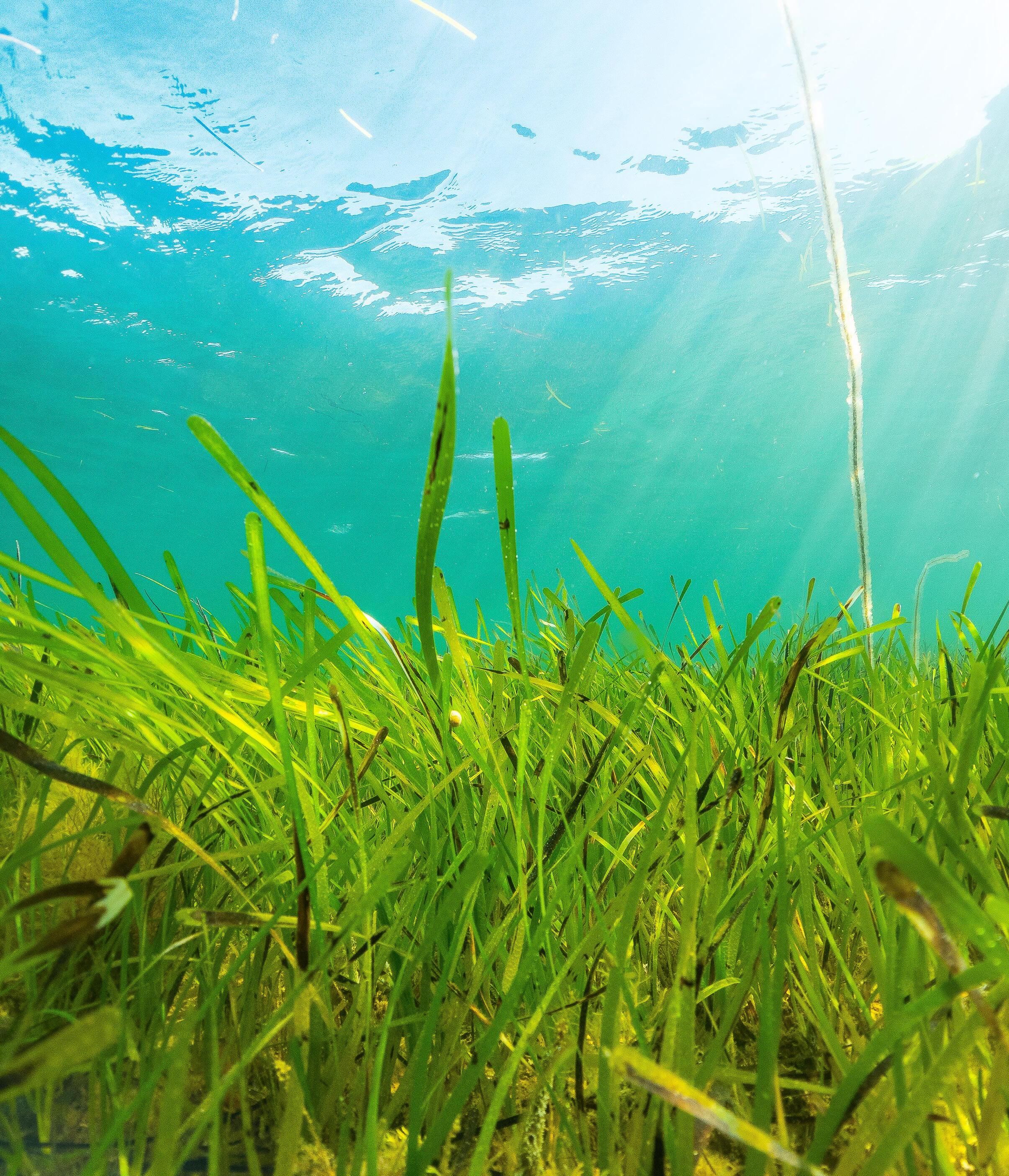

Seagrass meadows are vital marine habitats – locking in carbon, supporting biodiversity, and protecting our coastline. For the past three years, we’ve worked with the University of Portsmouth and marine services provider Boskalis Westminister Ltd to restore seagrass along our shores. Originally planned to conclude this year, Boskalis has chosen to extend their support for a further two years and increase funding by 50%.
After seed collection during the summer, seeds are stored in our aquarium at the University of Portsmouth’s Institute of Marine Sciences, and put into dormancy over winter. This year, we built a new storage unit and improved our seed husbandry, leading to healthier seed and a reduced rate of fungus, increasing germination success.
generously supported by FatFace Foundation. Their contribution has also funded the training of six volunteer Seagrass Survey Leaders who will lead our citizen science programme of surveying existing seagrass meadows.
Now in its second year, the Solent Seascape Project, funded by the Endangered Landscapes & Seascapes Programme and East Head Impact, is restoring marine habitats at scale. As part of this innovative multi-habitat project, the Trust is conducting seagrass restoration work and leads on the community engagement and behaviour change initiatives. This year...
The Trust was a partner in the LIFE Recreation ReMEDIES project, which concluded in October 2024. Our citizen science volunteers monitored boat traffic and revealed significant pressure on seagrass meadows, particularly at Osborne Bay.
We delivered 110 public events, with nearly half led by volunteers.
Four years of data revealed that up to six boats per hour anchored in seagrass areas at peak times, causing severe damage. In response, a voluntary no-anchor zone was introduced in spring 2024, incorporating advanced mooring systems to reduce seabed disturbance. Initial monitoring at Osborne Bay showed a
We reached over 3,500 people.
60% reduction
in anchoring over key weekends, marking a significant step forward in seagrass conservation.
Volunteers have dedicated an incredible 2,410 hours of their time to public events.
Volunteers were awarded the Marsh Award. This was the first time the award went to an entire group –celebrating their impact on seagrass restoration, public education, and marine research.
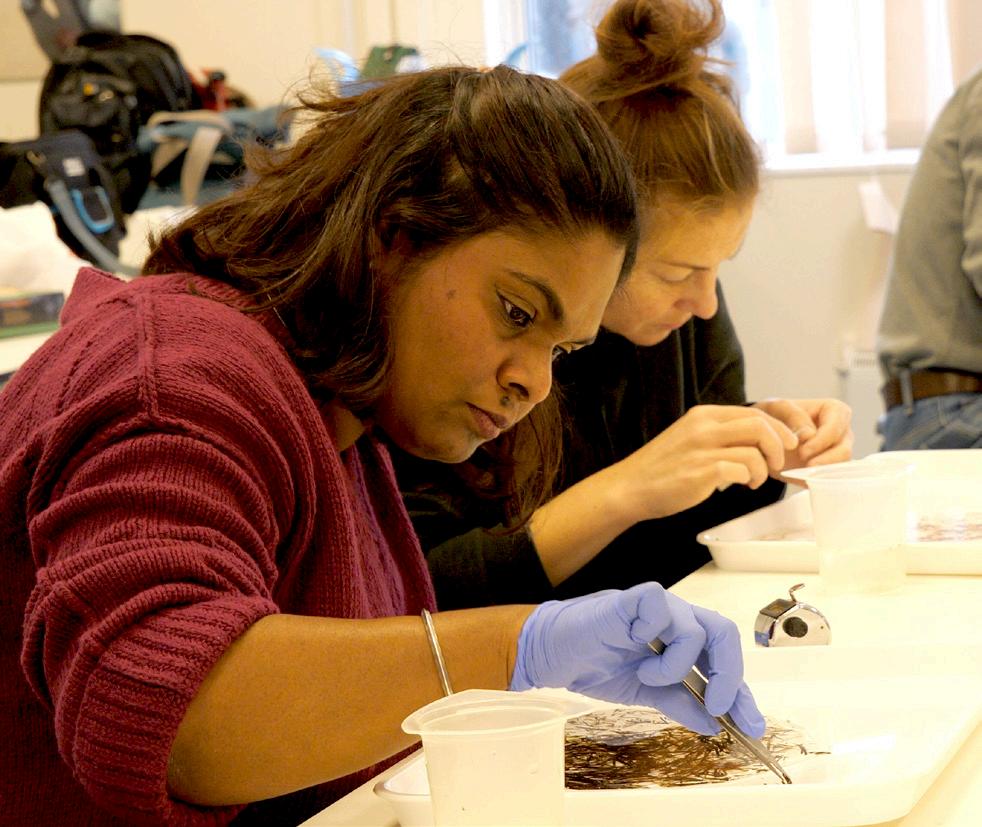
Solent Seagrass Restoration highlights
In summer 2024, we doubled our volunteer hours to 220 hours across 10 seed collections at Calshot and Seaview.
60,000
Zostera marina seagrass seeds gathered for planting in 2025
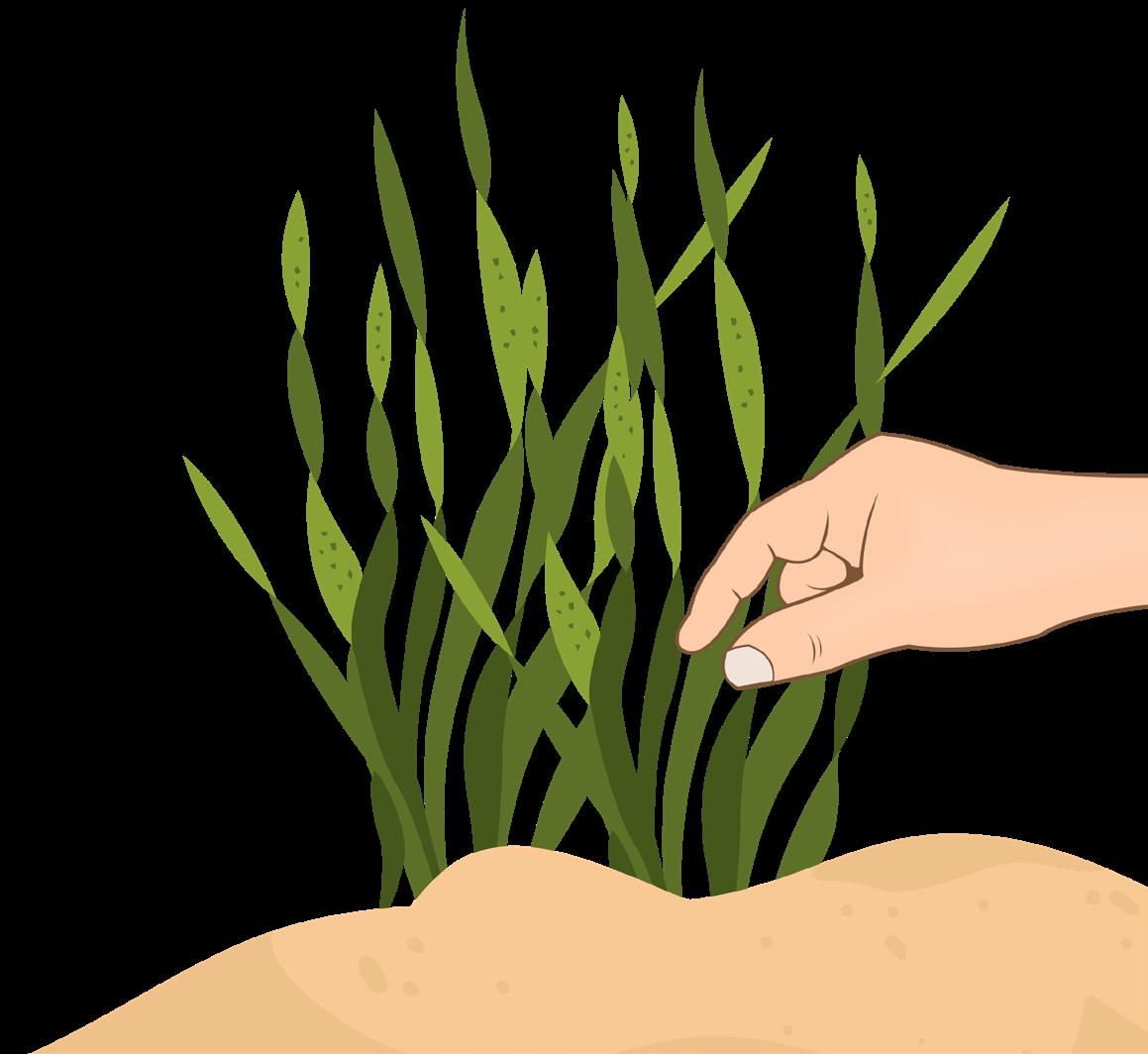
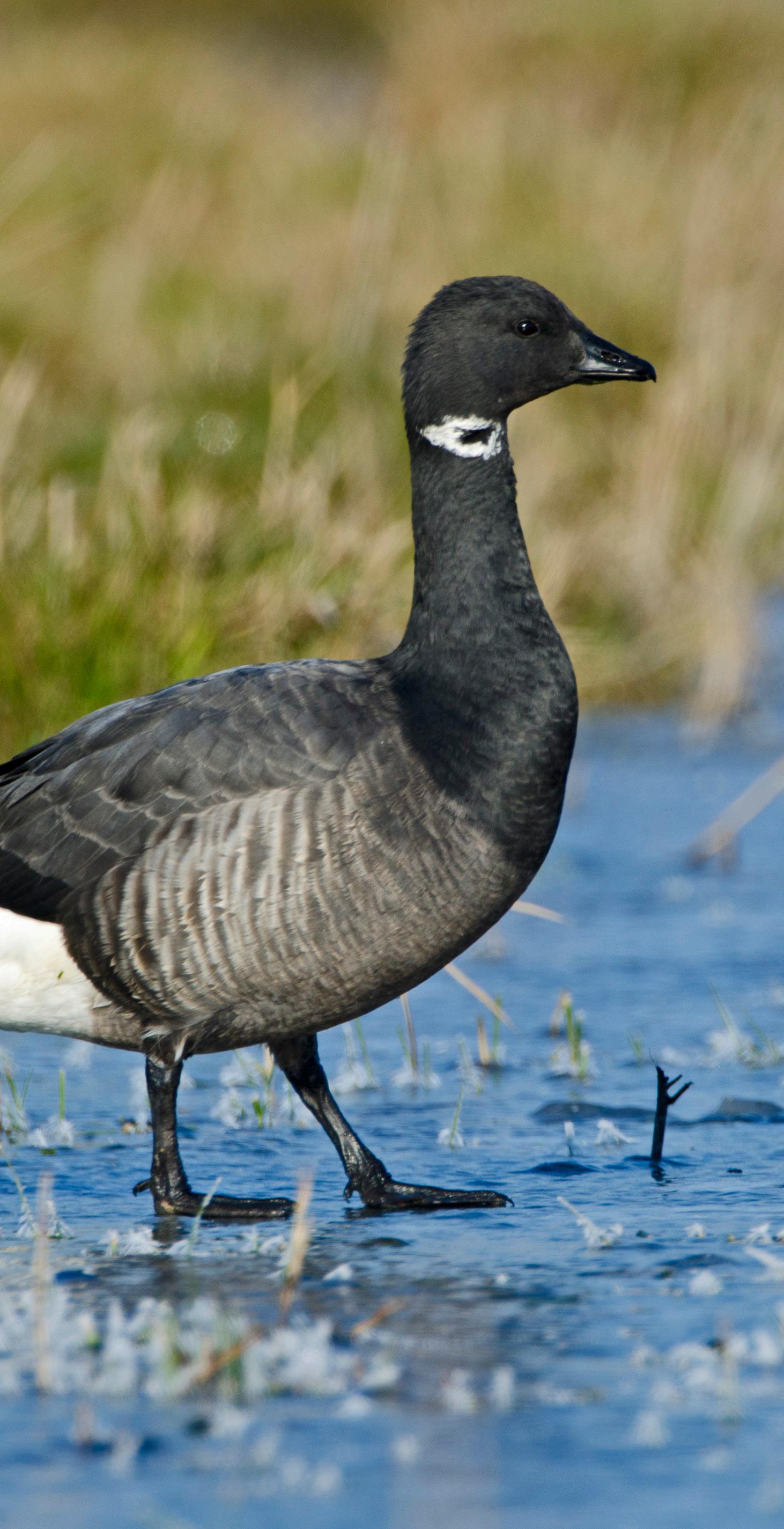

Society faces growing challenges, from housing and food security to the urgent biodiversity and climate crises. Nature-based solutions help address these issues while restoring ecosystems and supporting wildlife.
The Trust has successfully delivered nutrient mitigation at Wilder Little Duxmore and Wilder Nunwell on the Isle of Wight, helping restore nature and bring ecosystems back to life on a landscape scale.
Purchased in 2020 with funds generated from nutrient credits, Wilder Little Duxmore on the Isle of Wight became our first rewilding site. Since then, it has been transformed from a barren landscape to one thriving with life.
By taking the land out of intensive arable use, we’ve significantly reduced nutrient pollution flowing into the Solent. This has helped protect sensitive marine ecosystems, including seagrass meadows that support species like bass, cuttlefish and seahorses.
We continue to monitor our sites as they become indicators of ecosystem health and function. This year, we have recorded good numbers of woodcock, whitethroat and wren breeding. Merlin and goshawk have been spotted, as well as scarce migrants such as tree pipit and wheatear. It is clear that we have created a new sanctuary for wildlife, protected for nature in perpetuity.
Biodiversity Net Gain projects in the pipeline
The requirement for developers to provide 10% Biodiversity Net Gain (BNG) on their developments came into effect in February 2024. The Trust is leading the way in using this mechanism to restore nature at scale. This can range from wildflower meadows and traditional orchards, to restored hedgerows and naturalised streams and wetlands. All of which will increase biodiversity and bioabundance of a whole range of species, from invertebrates to birds of prey.
Our aim is to deliver high-quality mitigation using the BNG mechanism as a gold standard, achieving significant gains for wildlife and helping us to achieve our ambition to put nature into recovery and create more space for wildlife by 2030.
Kingwell Limited has partnered with the Trust, New Forest District Council and New Forest National Park Authority to deliver the Keyhaven Natural Capital Scheme on its 245 hectare (605 acres) farm at Keyhaven, near Milford on Sea, Hampshire.
Once established, the land will connect a Site of Special Scientific Interest, a Ramsar site and Special Areas of Conservation to create a 1,000-acre ‘reserve’ west of the Pennington Marshes.
To be managed by the Trust, the scheme will generate around 440 BNG units and circa 3,950 Nitrate credits to mitigate the impact of development on the local environment.
The Environment Act 2021 established Conservation Covenants, a new mechanism for landowners to be able to make longterm, legally binding commitments to manage their land for nature. This new type of agreement is overseen by a Responsible Body - a designation now held by the Trust, and our consultancy Arcadian, enabling BNG schemes to be delivered to the highest standards.
The Solent Waders and Brent Goose Strategy, developed to protect key feeding
and roosting areas for coastal birds, has guided planning decisions for over 20 years - with over 23,000 individual bird records submitted and a network of almost 900 sites.
While developers have long been required to offset impacts on these coastal habitats, ensuring mitigation sites are secured and well managed for the long term is something that has caused concern. To help meet this need, the Trust is taking on management of mitigation sites to ensure they are managed in the best possible way. The first Solent Wader and Brent goose mitigation site was gifted to the Trust in November with three more in the pipeline.
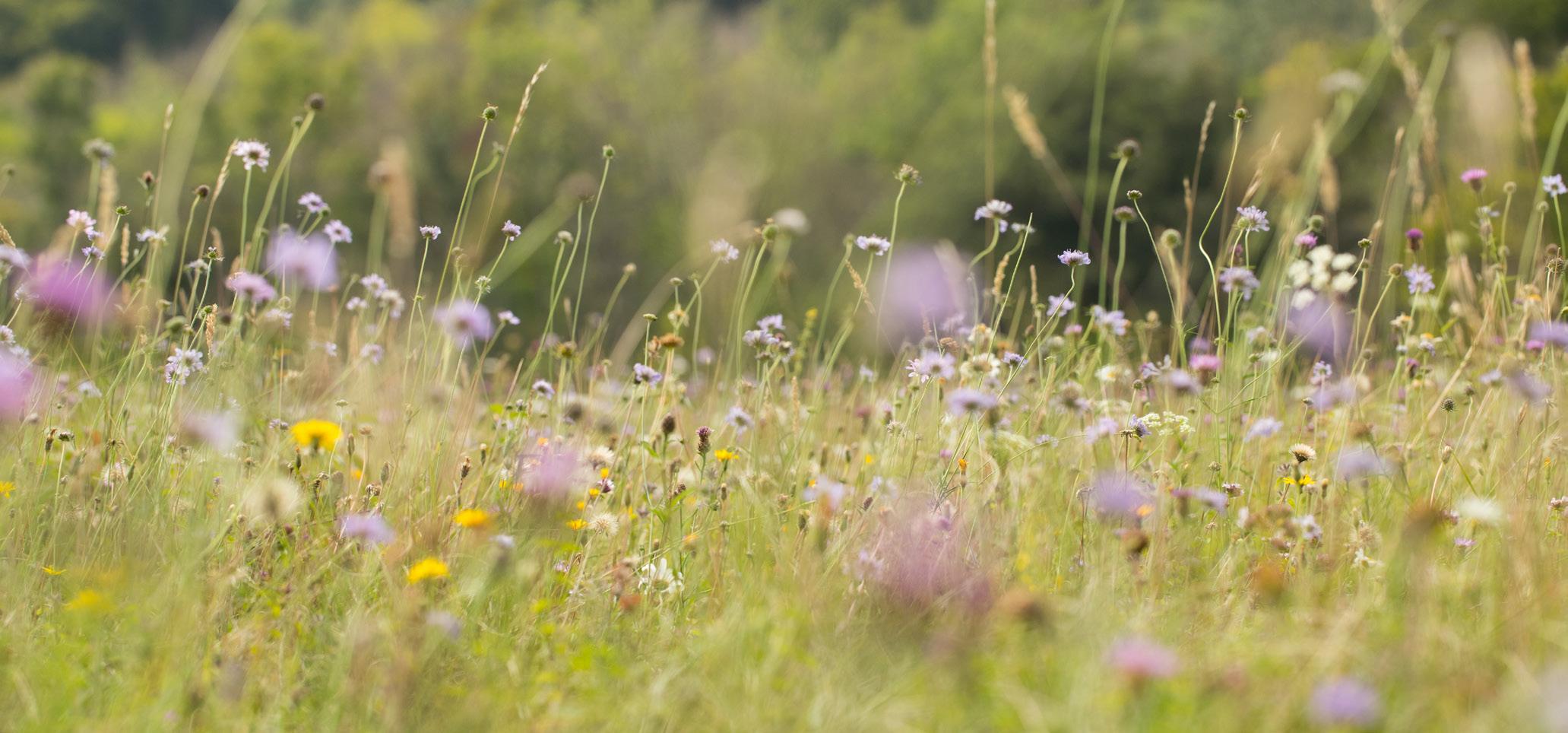
This year, partnership has been key

We’ve worked with Fareham Borough Council to convert 16 hectares (40 acres) of intensive arable land in Stubbington to create wildflower meadows.

Purchased 4.5 hectares (11 acres) of arable land next to our Deacon Hill Nature Reserve to create chalk downland.
Our ecologists have surveyed over 150 hectares (371 acres) of land for habitat creation and enhancement through BNG.
Created 15 hectares (37 acres) of wildflower meadow at Keyhaven as part of the project with Kingwell Limited.
600m of hedgerows planted at Keyhaven as part of the project with Kingwell Limited.

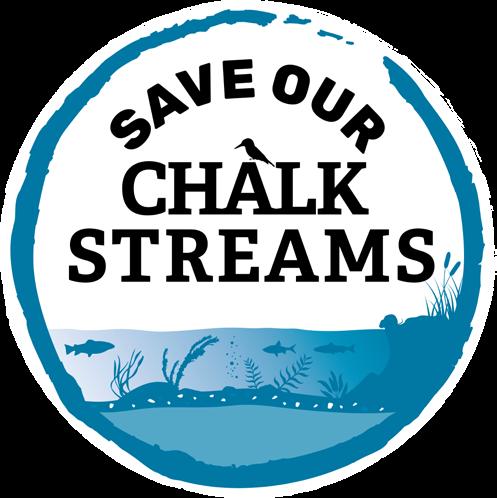
Since its relaunch in Autumn 2024, the Save Our Chalk Streams campaign has sought to safeguard these rare and vulnerable habitats through protections in planning. In September, almost 700 people called on the Government to protect chalk streams in their reforms to the National Planning Policy Framework.
In early 2025, we received concerning reports that the Government had shelved the longawaited Chalk Stream Recovery Pack, a key initiative aimed at safeguarding these globally significant habitats. In response, we joined forces with 215 local councillors to send an open letter to Rt Hon Angela Rayner & Rt Hon Steve Reed OBE, urging the Government to strengthen protections for chalk streams and urgently release the Recovery Pack.
Tipner West
Nearly 7,000 people responded to Portsmouth City Council’s draft Local Plan to oppose environmental harm at Tipner
West between July and September 2024. The proposed development would have set a dangerous precedent nationwide, by damaging protected habitats under the guise of overriding public interest.
In March 2025, the Secretary of State for Housing, Communities and Local Government, Angela Rayner MP advised that the public benefits did not justify the significant ecological damage it would have caused – marking a major win for wildlife.
Subsequently, the Government’s original decision has been questioned and, at time of going to print, it is under review, so the Trust will continue to monitor developments very closely to ensure that Tipner West’s natural value is respected, and its future is shaped in a way that reflects its importance as a protected wildlife site.
Ahead of the July 2024 General Election, the Trust actively engaged with 100 local parliamentary candidates to highlight our priorities for nature within their constituencies. We hosted candidate walks on our nature reserves, offering first-hand insight into the potential for nature recovery right on their doorstep.
This early engagement has supported new MPs to speak up for nature in Parliament, including Danny Chambers, MP for Winchester.
Nature-positive
To secure 30% of land and sea for nature’s recovery by 2030, as per Environment Act
(2021) targets, it is essential that nature is given more weight in the planning system. The Trust has played a significant role in campaigning for nature-positive planning, with Luke Murphy, MP for Basingstoke and Deane, working with us to host a parliamentary round table in September to discuss the loopholes undermining the delivery of Biodiversity Net Gain (BNG) in new developments.
In addition, the Trust has continued to respond to strategic planning consultations to speak up for nature, including the National
Planning Policy Framework, Local Plans and Local Nature Recovery Strategies.
The Trust joined over 60,000 people at Restore Nature Now in June 2024, to call for urgent action to address the UK’s biodiversity crisis. We hosted a vibrant workshop to equip participants with the tools and inspiration they needed to prepare powerful banners for the March – attended by special guests Chris Packham and Megan McCubbin.
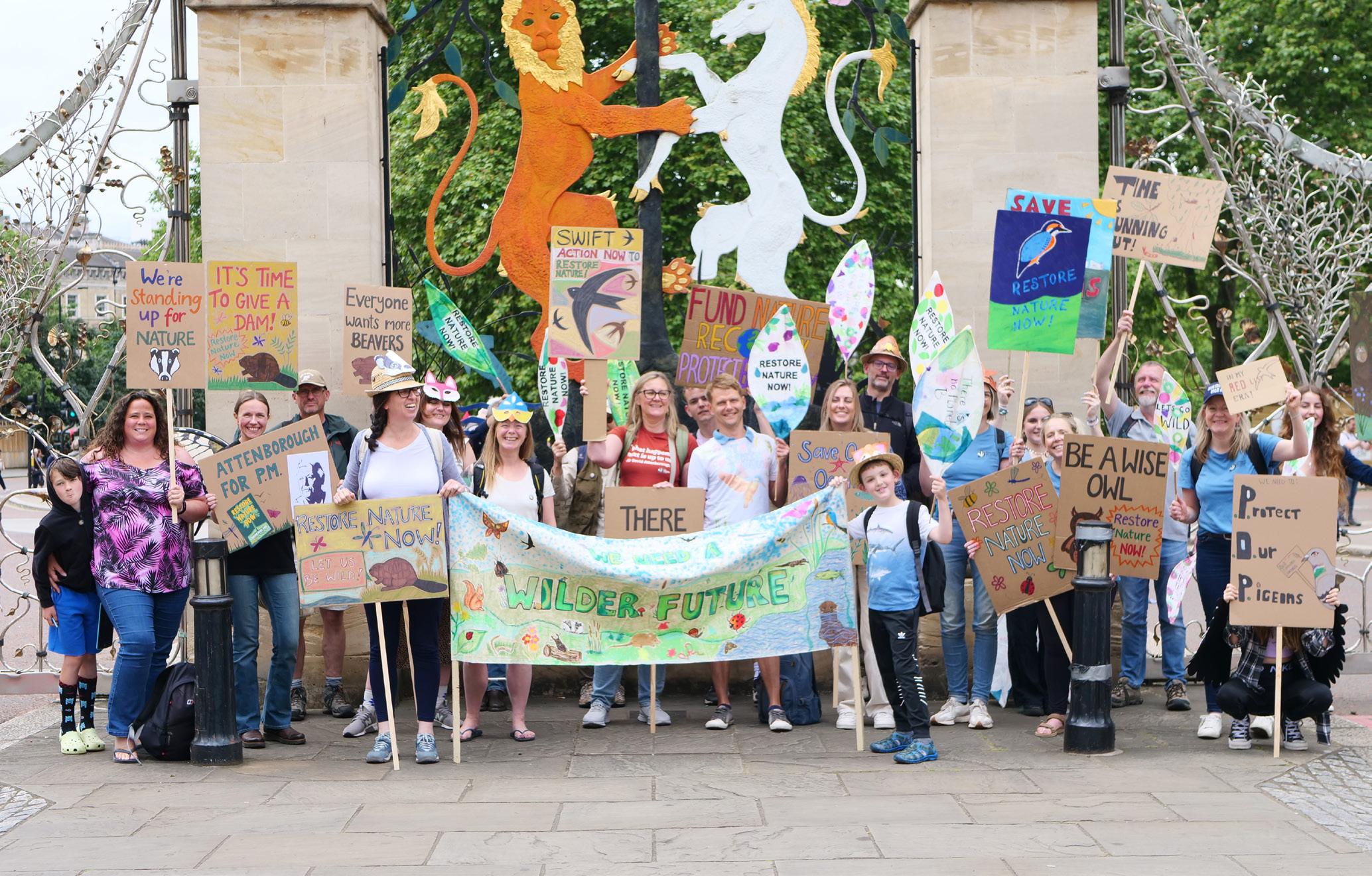
Advocacy highlights Engaged with 100 candidates across Hampshire and the Isle of Wight prior to the General Election.
Ran 2 e-actions: Tipner West, 6,913 responses, and chalk streams National Planning Policy Framework (NPPF), 676 responses.
10 MP meetings.
Fought for nature positive planning, responding to the National Planning Policy Framework (NPPF), 6 local plans and 2 Local Nature Recovery Strategies (LNRS).
Recruited 7 campaign leaders.
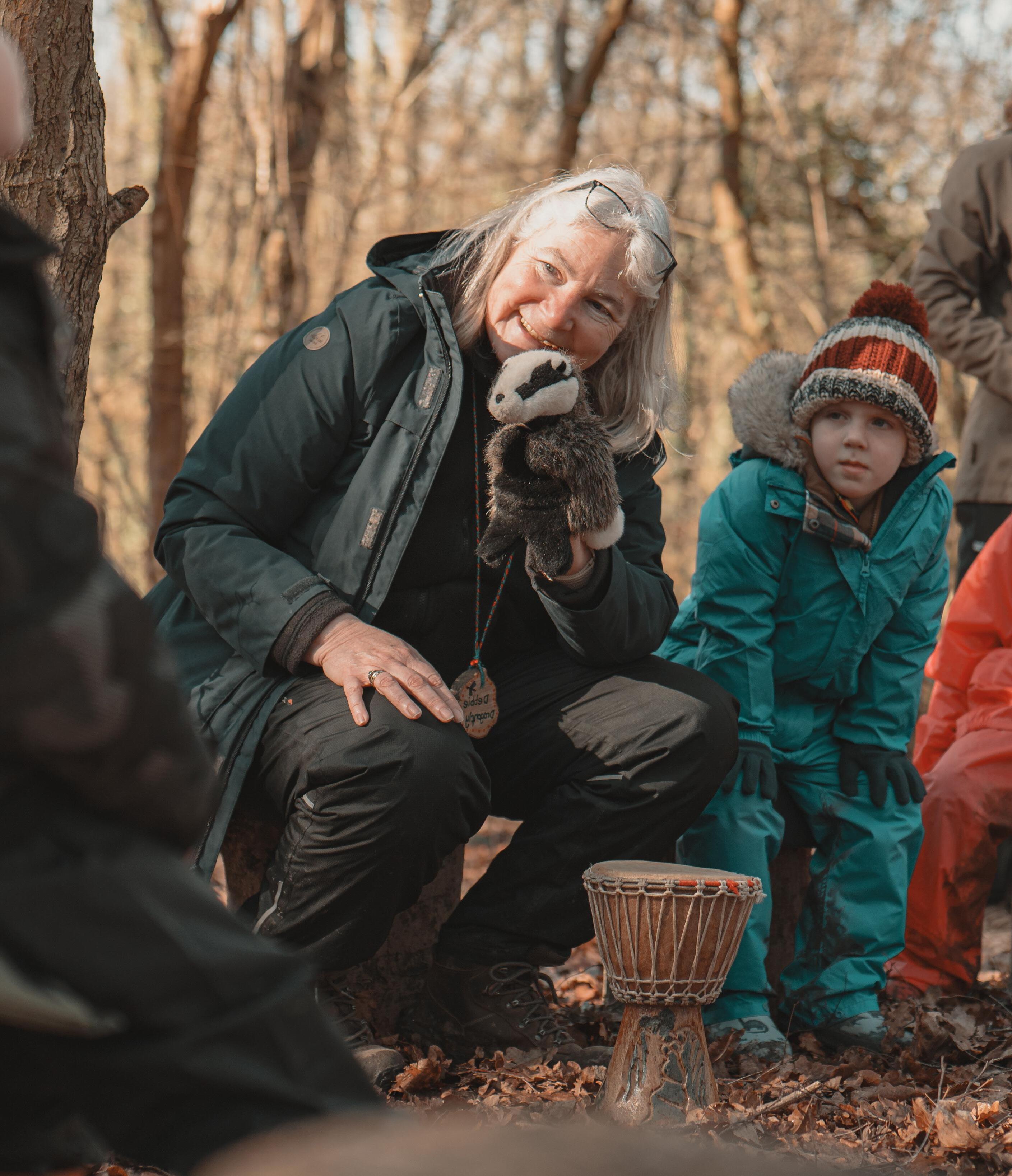

This year has been a powerful demonstration of what’s possible when people come together for nature. Across Hampshire and the Isle of Wight, communities, individuals, and partners have united to create meaningful change.
A new partnership with Abri Housing Association has brought nature into the heart of the Mansbridge community. Residents and Abri’s grounds team have collaborated to improve shared green spaces, an inspiring example of what coming together for wildlife can look like.
In collaboration with the Greening Campaign, communities across Hampshire and the Isle of Wight have been identifying new ways to welcome nature into their neighbourhoods. Through training in wildlife identification, habitat surveys, and community mapping, residents are gaining the tools and confidence to lead local action. A highlight was the Space for Nature Conference in early 2025, which brought local leaders together to connect, share learning, and strengthen the wilder community movement.
Driving this momentum are passionate individuals making change on the ground. Our volunteer Garden Champions visited 23 gardens this year, while our Wilder Community Officers supported over 40 neighbourhoods, businesses, and groups with practical advice.
Building on the fantastic work of our Community Officers, we secured four years of funding from the National Lottery Community Fund in September. This support is helping us extend our reach, with a new officer now working with groups in Winchester, Basingstoke, and Petersfield. We’ve also welcomed seven new Super Champions, dedicated individuals inspiring and enabling practical community action for nature.
Wilder Schools is focused on enhancing nature connection and action among children through repeat engagement, both on school grounds and on nature reserves and green spaces. We have continued to build momentum. A new North Hampshire network meeting has been established to provide school staff with opportunities for peer support and shared learning.
Education centres have continued to host one-off school and group visits, alongside the ongoing development of Wilder Schools, public events and wider public engagement. A new partnership initiative with Swanwickbased NATS staff has also proven successful, helping their workforce connect more deeply with nature through in-person events and seasonal video playlists, showcasing the reserve’s changing landscapes and sounds.

Scan the QR code to watch the Swanwick Lakes nature connection videos
https://tinyurl.com/2655vjat
As the Watercress and Winterbournes Landscape Partnership Scheme enters its final year, community action is ensuring that our precious headwater chalk streams of the Test and Itchen are stronger than ever. The scheme, supported by the National Lottery Heritage Fund, now has 300 enthusiastic chalk stream champions all taking local action - many forming groups such as the Pillhill Brook Association, the Itchen Invertebrates Group and the Upper Itchen Restoration Group to continue the legacy of our work into the future.
The scheme helped groups expand their work by awarding six community grants this year, totalling £17,896.
This year, we provided targeted advice and grants to landowners to reduce pollution and we improved 850 metres of river habitat across the Anton, Pillhill Brook, Bourne Rivulet, and Cheriton Stream.
The project team delivered 34 educational sessions to 572 young people, ran 32 community events on chalk streams, took part in nine external events, and held eight sessions for land managers, reaching a total of 2,532 people.
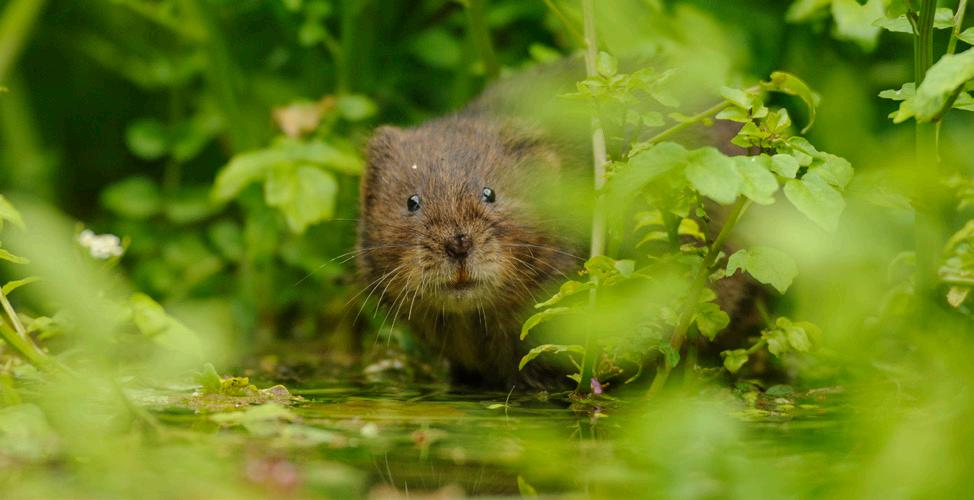
Education and engagement highlights
20 schools visited delivering assemblies, events and activities.
2,621 people (students and teachers) engaged with through our activities.
49 visits throughout the year were made to different schools across Hampshire and the Isle of Wight.
9,500 interactions were had through schools, groups, and events across the three centres.
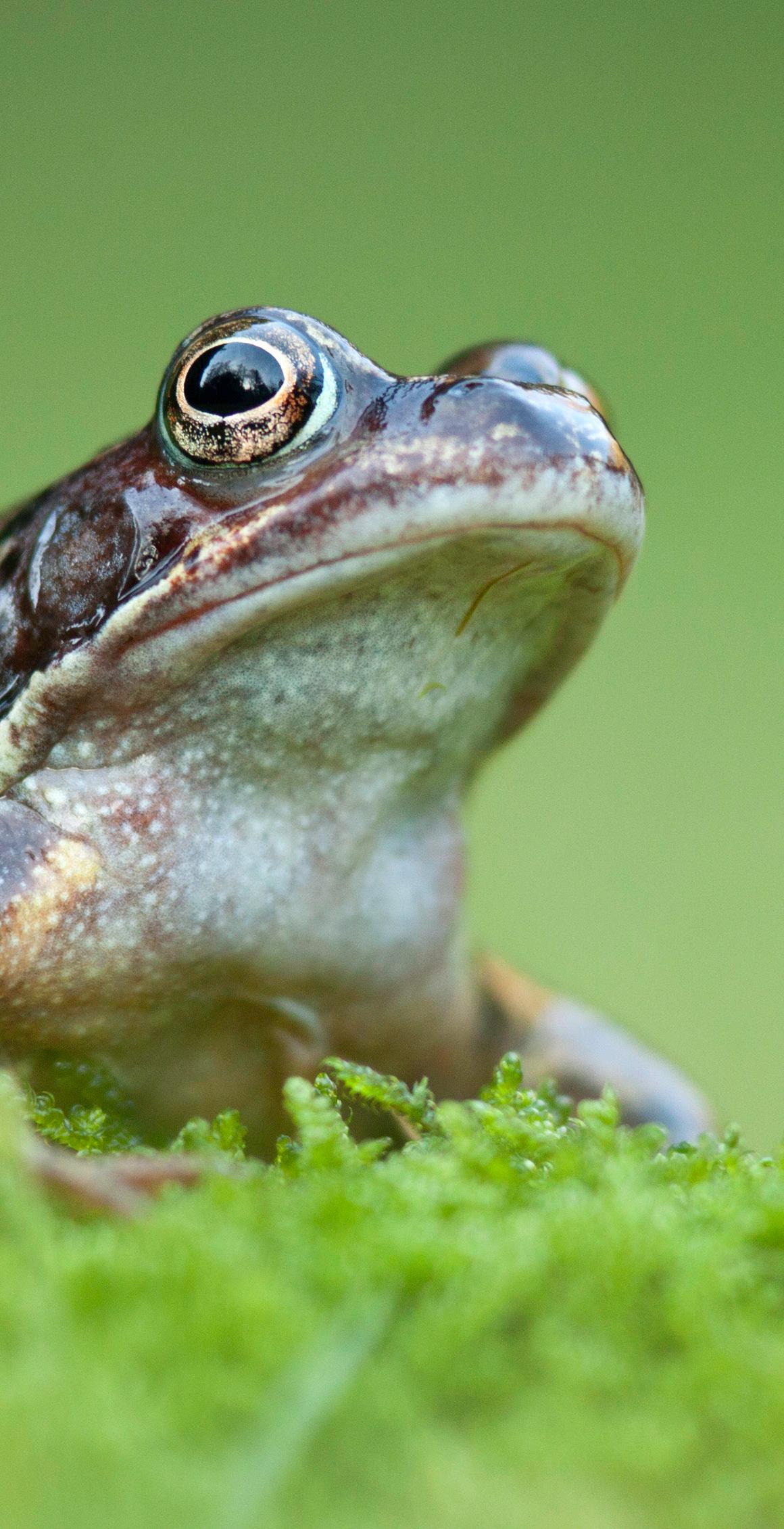

• Complete mid-term review of our nature recovery work to ensure we are achieving maximum impact across the two counties.
• Manage, expand and connect our Estate to help nature recover. Acquire or take on management of new sites in strategic areas. Ensure existing sites are managed favourably for wildlife and meet legal obligations.
• Complete large capital habitat projects on the MOD estate and Eastern Yar, and deliver funded infrastructure projects at Winnall Moors and St Catherine’s Hill Nature Reserves.
• Defend nature by seeking to remove or mitigate external pressures, for example, from development or pollution, on our nature reserves and high-priority protected sites.
• Further develop and strengthen strategic partnerships for nature, including with, the Environment Agency, Natural England, National Parks, Local Authorities and other key colleagues and stakeholders.
• Continue to deliver ambitious nature recovery activities, such as the Watercress & Winterbournes, Solent Seascape Partnership and Solent Seagrass Restoration projects.
• Progress beaver recovery project on the Isle of Wight by submitting a wild release licence application, in line with new government guidance.
• Continue to monitor how nature is recovering on our rewilding sites –communicating the outcomes and sharing best practice.
• Implement the Trust’s climate change adaptation and resilience plan.
• Complete a review of the Trust’s NatureBased Solutions strategy to ensure our activities remain relevant and competitive in the market.
• Advocate and demonstrate NatureBased Solutions as a tool for nature’s recovery and for reducing pressure on the wider environment.
• Continue to develop high-integrity Nature-Based Solutions schemes, and position the Trust as a key deliverer of projects that restore wildlife, reduce pollution and sequester carbon.
• Become providers of Conservation Covenants within the two counties and for strategic partners in other counties – through the Trust and Arcadian both becoming Responsible Bodies.
• Expand the Wilder Communities and Wilder Neighbourhoods programmes, with a particular focus on north and central Hampshire.
• Grow the Wilder Schools programme by testing existing packages, developing a secondary offering and hosting the annual Wilder Schools Conference.
• Increase engagement with young people, including developing and securing funding to launch a Youth Voice programme.
• Influence Devolution plans for Hampshire and the Solent, including governance of
delivery of Local Nature Recovery Strategy.
• Deliver the next phase of our Interpretation & Visitor Engagement Strategy, encouraging positive behaviour change on our Estate and deepening public connection with nature.
• Grow fundraising income and return on investment by implementing updated strategy across priority income streams. Implement updated marketing & communications strategy, engaging with larger audiences and supporting the delivery of the Trust’s key objectives.
• Hold Wilder Conference and Awards event to celebrate the achievements of the Trust and recognise people taking action for nature’s recovery.
You can help create a wilder Hampshire, Isle of Wight and local seas by getting involved in the work of the Trust.
Protecting wildlife and wild places needs all of us. Whether you’re an individual, part of a community group, or a business, you can make a difference by becoming a member, donating, fundraising, volunteering, leaving a gift in your will, or partnering with us through corporate support. Together, we can create a wilder future for Hampshire, the Isle of Wight, and beyond.
To find out more visit hiwwt.org.uk/support-us, scan the QR code or call 01489 774408.

Gifts in Wills are crucial to the future of the Trustto learn more about this, scan the QR code to watch our new film. You can also contact Steph Watson for more information on 01489 774400 or email Steph.Watson@hiwwt.org.uk.



Despite the tumultuous external landscape and difficult year for some of our income streams, the Trust remains in a strong financial position thanks to robust financial reserves, prudent budgeting, disciplined financial management, and the success of our income generation strategy in recent years.
The Trust faced a challenging year in terms of income – with a 16% reduction compared with the previous year. While fundraising income streams performed strongly, naturebased solutions (NBS) income dropped year on year with a backdrop of market uncertainty amid shifting policy positions and statements from the new Government.
Total incoming resources for the year were £9.9m of which 71% was unrestricted (2024: £11.7m). Income from donations, legacies and membership increased to £3.7m (2024: £3.5m), with membership growing by 4.8% to £1.5m (2024: £1.4m) thanks largely to a supporter increase of 414, and 570 existing members generously uplifting the value of their subscriptions. The Trust’s Nitrate Mitigation Programme invoiced £1.67m (2024: £4.2m) from nitrate credit sales at our two rewilding sites on the Isle of Wight –Wilder Little Duxmore and Wilder Nunwell.
Total annual expenditure increased by 10% to £7.97m (2024: £7.25m), with £6.8m (2024: £6.42m) spent on charitable activities, meaning 85% of our total expenditure went towards charitable activities including our nature reserves, conservation projects,
education, community engagement and campaigning for stronger environmental protections.
Looking ahead, while we are confident in our financial health, we are also acutely aware of the need for a sustainable operating model and have a keen focus on longterm resilience. We will continue to invest strategically in our two parallel income generating strategies: fundraising and NBS.
Despite a drop in NBS revenue this year, we intend to continue our focus on this approach which has proved very successful in the past three years and which could bring new opportunities as the green finance and nature markets evolve.
We also remain committed to growing our base of supporters – individuals, corporates, grant funders and charitable trusts and foundations – with fundraising on a growth trajectory and remaining crucial to the Trust being able to deliver its charitable aims.
Alongside increasing our income, we closely manage expenditure in the face of rising costs, guided by strict budget controls and a strong value-for-money approach. At the same time, we recognise the importance of investing in the essentials, such as IT systems, infrastructure and fair pay for staff, which ensure the Trust runs effectively and efficiently in order to keep striving for a wilder Hampshire and Isle of Wight for the benefit of people, communities and wildlife.
Donations: £1,334,938 (13%)
Legacies: £878,451 (9%)
Membership: £1,496,938 (15%)
Activities for generating funds: £372,275 (4%)
Conservation & education: £5,600,335 (57%)
Investment: £175,162 (2%)
Other income: £18,527 (0%)
Conservation, education & engagement activities: £6,339,248 (79%)
Membership services: £463,064 (6%)
Cost of generating voluntary income: £1,168,558 (15%)
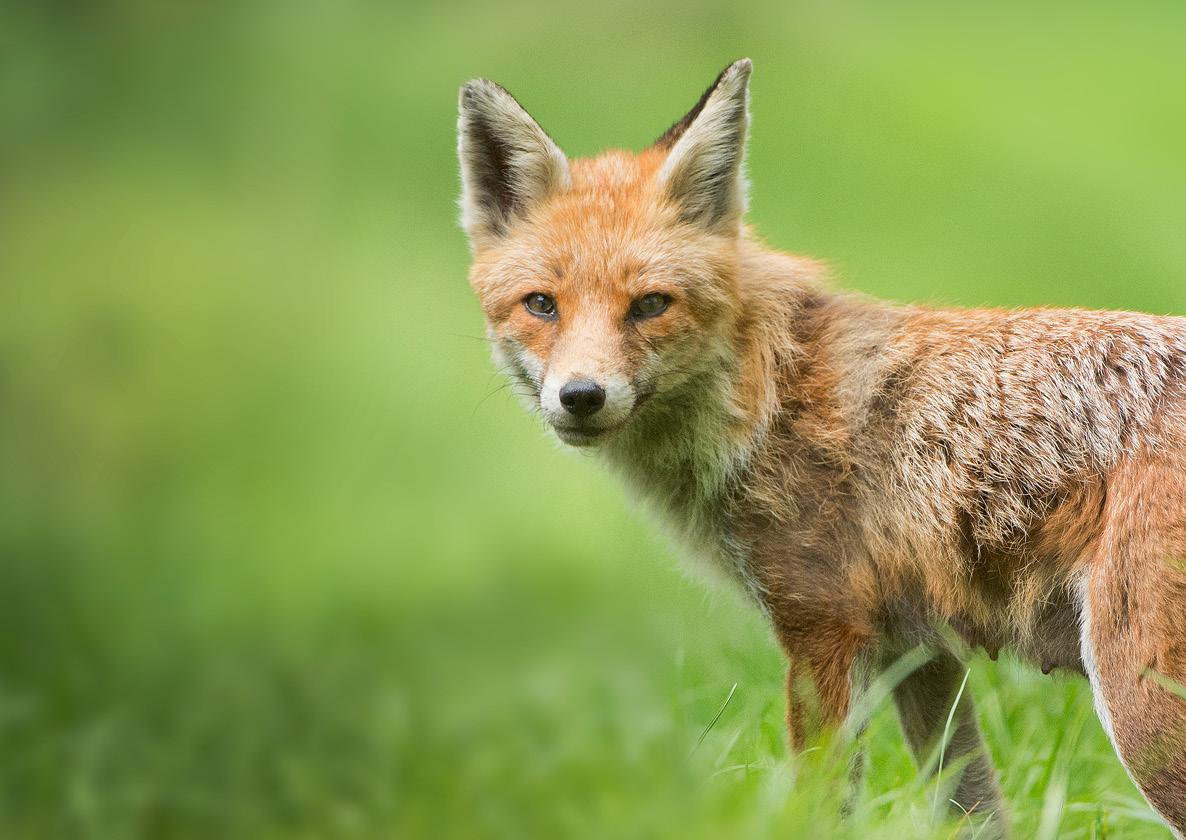
We are incredibly grateful to our members, staff, volunteers, donors, partners and funders for their commitment to supporting nature's recovery. Your continued generosity, support and dedication is crucial in helping to create a wilder Hampshire and Isle of Wight for the benefit of wildlife, nature and people. Thank you.